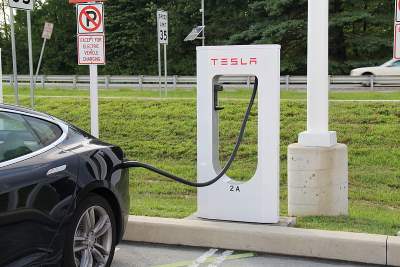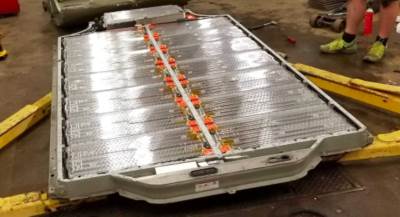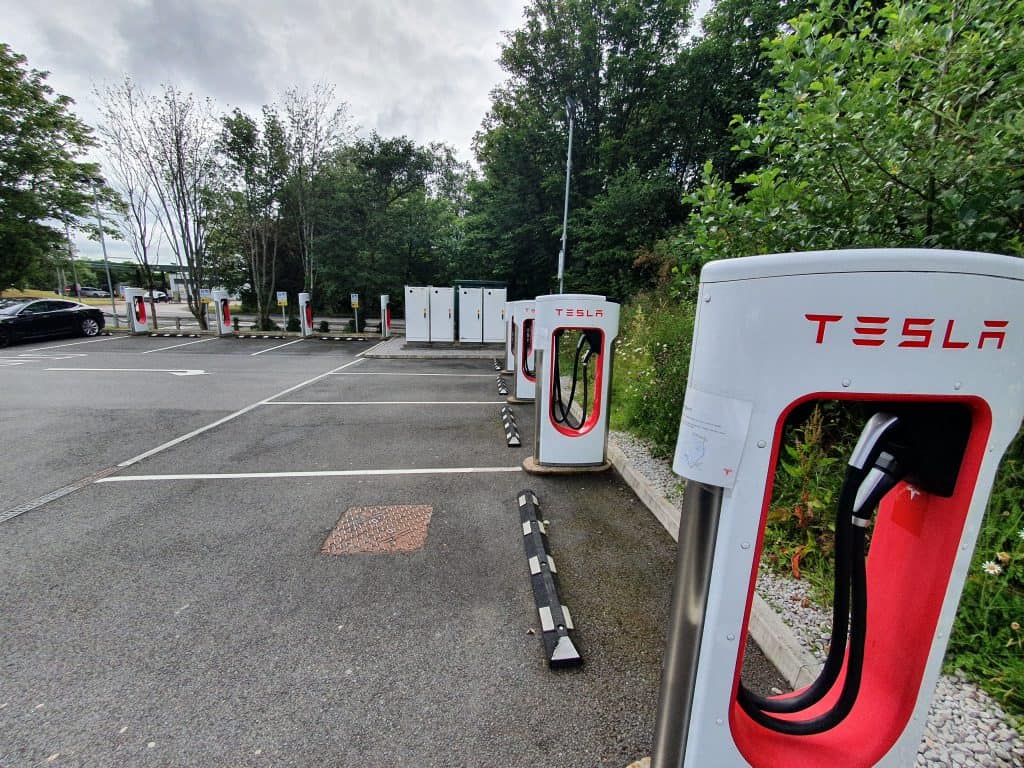In the world of electric vehicles, the issue of charging is among the most discussed. Whether it’s concerns over home charging setups, charging speeds, recommended charging levels, use and availability of public charging infrastructure, the topic is never far away from the lips of a current or aspiring EV owner.
Tesla and Supercharging

One company has been rather ahead of the curve when it comes to electric vehicle management, and that’s Tesla. Not only were they arguably the first company to make electric cars truly stylish, luxurious, sporty and desirable, but they were also the first to see how integrating charging services would become a necessary and fruitful wing on any EV enterprise.
The global network of Tesla Supercharger stations stood at just 280 in 2014, but by March 2020 that number had grown to 1,826 stations operating some 16,103 Supercharger units. Among those, 908 are located in the US, along with 98 in Canada, 16 in Mexico, 520 in Europe and 398 in the Asia/Pacific region. They provide high-power DC charging to the battery, which bypasses the internal charging power supply.
How much power a Supercharger is delivering depends on exactly where it is, which version of the technology it is and whether or not a single or pair of Tesla vehicles are sharing the unit. The original V1 and V2 charging stations delivered up to 150kW of power as a maximum, but this would be split between two cars if two cars are drawing from the same main unit. In 2017, Tesla introduced urban Supercharger units, which offered a lower but still impressive power delivery of 72kW.
Assuming a full 150kW load at one of the V1 or V2 Supercharger units, it takes just 20 minutes to charge to 50 percent, 40 minutes to 80 percent, and 75 minutes to reach 100 percent. Nearly all stations are located at rest stops, meaning you can plug in and relax while you wait.
Does Supercharging Reduce Battery Life?

This is a fairly common question, and reasonable when you consider the mainstream of battery advice that exists out there. It has become accepted wisdom amongst EV owners that the more powerful DC charging options, while much faster and better while you’re on the road, are not viable options to use as your regular charging method because over time they will cause degradation in the car’s battery.
The fact is that in a technical sense this is true, but it’s also true to say that many people’s fears of the negative impacts of DC charging have been somewhat overstated through the years. As it turns out, however, most EV owners currently don’t rely on DC charging because they charge their EV overnight at home. The myths surrounding the detrimental effects of fast charging, however, may well have put off some prospective city apartment-dwelling buyers who were worried that being forced to rely on local fast DC charging would render their battery useless in a few years.
A study from the Idaho National Laboratory found that while it’s true that consistent use of DC fast charging (aka Level 3 charging) would cause an EV battery to deteriorate faster, the difference is nothing like as dramatic as we have come to believe. Their test involved 4 Nissan Leaf EVs, two of which were charged twice daily on Level 2 chargers, and 2 that were charged on Level 3 fast DC chargers.
All the cars were tested in the same Arizona climate. After 50,000 miles of driving, the Level-2-charged cars had lost about 23 percent of their capacity, while the Level-3-charged cars had lost around 27 percent. It’s hardly the end of the world. Arizona’s searing heat may also have been responsible for taking some toll on the capacity, meaning that the charging could have had even less impact overall.
What’s the Deal with Teslas and Supercharging?

The idea that supercharging was bad for the Tesla battery started with a post in the Tesla Motors Club forum. User “Naonak” posted in 2017 that their Tesla had been found to have entered a “permanent degraded mode where it will no longer allow fast charging.” The user concluded that while this was bad for him/her, the worse news was that:
“Every Tesla…will permanently and irrevocably degrade their charging capabilities if you use DC Fast Charging of any kind more than unusual rare occasion.”
And so, the Tesla community was suitably alarmed, until other users started pointing to the flaws in Naonak’s theory:
1. The User Had Not Been Using Tesla Superchargers
Naonak logged a total of 245 DC charge ups, but then pointed out that these did not include the times they used a Tesla Supercharger. Naonak claimed that we could “add another 50-60 Supercharges to that” as an estimate. So, what were all the other charging sessions? It turns out that 99 percent of fast charging was with CHAdeMO, and not with Tesla.
2. Tesla Already Pointed Out a Decrease in Peak Charging Rate
In Tesla’s response to the apparent controversy surrounding Naonak’s charging, the company pointed out some important facts regarding restrictions and controls put in place in order to protect the battery from degradation over time.
In the response, Tesla said, “once [a vehicle] has been DC fast charged over a specified amount, the battery management system restricts DC charging to prevent degradation of the battery pack.” They went on to say that Naonak’s vehicle was still eligible for Supercharging, even though the peak rate may be somewhat restricted due to its long history of alternative DC charging
3. The Tesla Manuals Also Mention This
Tesla drivers should be aware of all the important information about their car. In the Tesla Model 3 Owner’s Manual, for example, on page 157, it clearly states:
“The peak charging rate of the Battery may decrease slightly after a large number of DC Fast Charging sessions, such as those at Superchargers.”
Telsa Model 3 manual, page 157.
The manual reminds us, however, that in reality it just means the possibility of your Supercharging duration being increased “by a few minutes over time.”
Do Supercharger Users Need to be Worried?
At the end of the day, the degradation in question is a matter of battery physics, and the bulk of the evidence points to two important facts:
- You can’t stop the degradation entirely
- Supercharging won’t have the massive impact that you think it will
Other researchers have gone into this topic and reminded us that other factors play a role in degradation, such as temperature. Professor Jeff Dahn of Dalhousie University in Canada found that lithium-ion batteries were not further degraded by DC fast charging when they were properly cooled before plugging in. You can hear this and further insights in a seminar led by Dahn back in 2013:
Finally, you can’t escape the many facts shared openly by Tesla engineers themselves. Tesla batteries have built-in protections to protect against degradation when things reach a certain point. That may be accelerated when you use DC charging outside of the Supercharger network, too. Even the story of Naonak, in the end, showed that despite their strong complaints, their battery in reality had not degraded as much as anyone was led to believe.
Conclusion: Will Future Batteries Solve the Problem Entirely?
Reuters reported back in May 2020 about newly designed Tesla batteries that are first being made and used in the Chinese market that may contribute to ending this problem entirely. The new designs are not only cheaper, but hardier and with a more durable chemistry. The key seems to have been designing batteries that make use of low-cobalt or cobalt-free chemistries with the addition of chemical additives and special coatings to reduce internal stress on the batteries.
Such innovations could help batteries better endure the rigors of the Supercharging process, and take any existing degradation that drivers currently experience it and reduce it to nearly zero. Such a goal will take time to achieve, however.
Therefore, does Supercharging reduce Tesla battery life? Technically, over time, yes, but it’s nothing like the problem you imagine. Furthermore, it shouldn’t stop you from becoming a Tesla or EV owner and you don’t have reliable access to slower Level 2 charging solutions in your home.
1 comment
jeeter juice